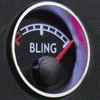An Idea I Came Up With
Announcements
-
Similar Content
-
Latest Posts
-
By myrbgivesmeheadaches · Posted
Damn really? 185kpa is like 26psi at 650rpm.. I thought that was ok? Using 10-60 castrol supercar. What should the oil pressure be with that weight oil? -
By Dose Pipe Sutututu · Posted
What oil weight are you using? That oil pressure is a bit concerning -
By myrbgivesmeheadaches · Posted
Mbs206 yea I have a link ecu which tells me the oil pressure is at 185kpa ish at idle.. it seems to be more on the intake side. I have cleaned out the vct and checked for gunk but there doesn't seem to be any. Externally it's loudest on the drivers side under the car. -
By myrbgivesmeheadaches · Posted
Thanks for the reply mate, Yes I get that schmutz und drek is most likely the cause if it is a lifter, it just seems highly improbable that a colapsed lifter ticks after it warms up and gets better oil flow and is dead quiet at cold idle.. the physics dont add up. Do you know where I can get new lifters from without paying the price of a tomei solid conversion? -
That bit at least you can fit by drilling a couple of clearance holes in the sump webbing to get a socket in there
-






Recommended Posts
Create an account or sign in to comment
You need to be a member in order to leave a comment
Create an account
Sign up for a new account in our community. It's easy!
Register a new accountSign in
Already have an account? Sign in here.
Sign In Now